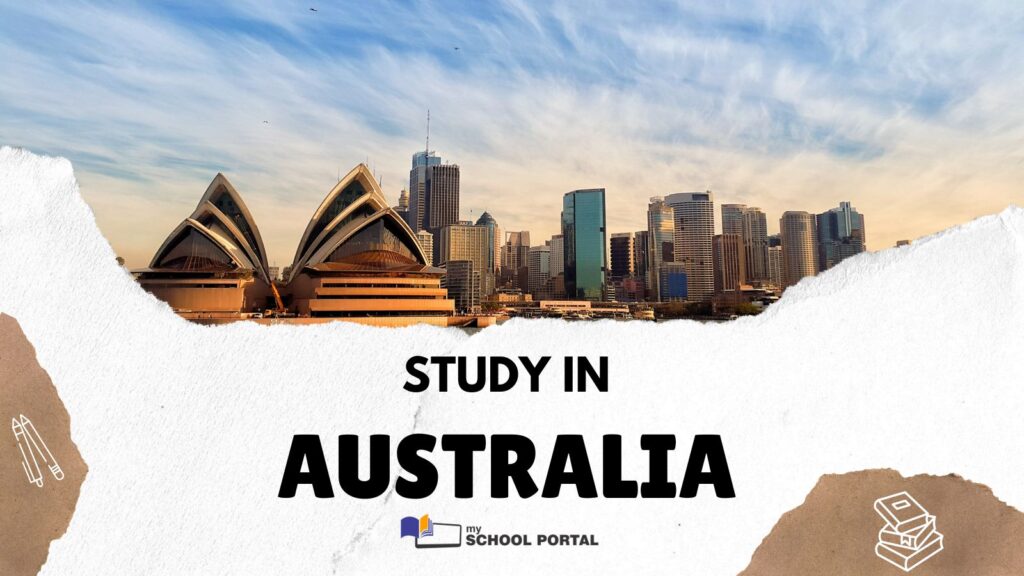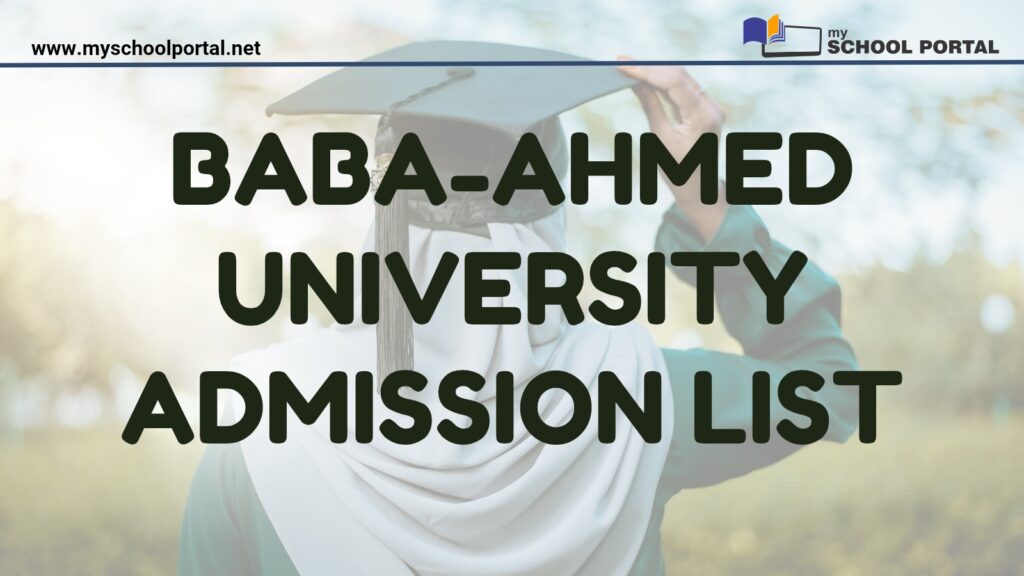Study in Australia
Discover top universities, scholarship opportunities, and everything you need to know about studying in Australia.

STUDY IN AUSTRALIA
How to Apply to Study in Australia
Why You should Study in Australia
World-Class Education
Australia boasts top-ranked universities with globally recognized degrees and a strong focus on research and innovation.
Diverse Culture
The country’s multicultural society makes it a welcoming and enriching environment for international students.
High Quality of Life
Australia offers a great lifestyle, with beautiful landscapes, modern cities, and excellent healthcare.
Work Opportunities
Students can work part-time while studying, and post-graduation, they can take advantage of work visa options.
What are the Requirements to Study in Australia?
Student Visa (Subclass 500)
A valid student visa is required for international students. This visa allows you to study full-time at a registered Australian institution and includes work rights during your study period.
Valid Passport
Ensure your passport is up-to-date, as it must cover the duration of your stay in Australia. Without a valid passport, you cannot apply for a student visa.
Overseas Student Health Cover (OSHC)
Australia mandates that all international students obtain OSHC, which covers basic medical expenses during your stay. You’ll need to purchase this insurance before your arrival.
Genuine Temporary Entrant (GTE) Statement
The GTE requirement ensures that students intend to come to Australia temporarily for education purposes. You’ll need to provide a personal statement explaining your reasons for studying in Australia and confirming your commitment to returning home after completing your studies.
Financial Capacity
Students must prove they can financially support themselves while studying in Australia. This includes demonstrating funds for tuition fees, living expenses, travel costs, and additional dependents (if any).
English Language Proficiency
Most Australian institutions require proof of English proficiency. You may need to take exams like IELTS, TOEFL, or PTE and meet the specific score requirements of your chosen institution.
Confirmation of Enrolment (COE)
After being accepted by an Australian institution, you’ll receive a COE. This document is required to apply for your student visa and proves your enrollment in a registered course.
Health Requirements
Students may need to undergo a health examination to ensure they meet Australian health standards. This step helps protect the Australian community from health risks.
Character Requirements
International students must meet good character requirements, which may involve a police clearance certificate from your home country or any country you've lived in for a significant period.
Top Universities in Australia
(According to QS World University Rankings)
Australia is home to some of the world’s highest-ranked universities, recognized globally for their academic excellence, research output, and innovation. Below are the top Australian universities based on the QS World University Rankings:
The University of Melbourne (Ranked 13)
Located in Parkville, The University of Melbourne consistently ranks as Australia’s top university, excelling in research and offering diverse programs across various fields.The University of Sydney (Ranked 18)
As one of Australia’s oldest institutions, The University of Sydney is known for its strong academic reputation and beautiful campus, attracting a global student body.The University of New South Wales (UNSW Sydney) (Ranked 19)
A leader in research and innovation, UNSW offers world-class programs in engineering, business, and law. Its vibrant campus in Sydney makes it a top choice for international students.Australian National University (ANU) (Ranked 30)
Located in Canberra, ANU is renowned for its research excellence, particularly in politics, international relations, and the sciences. It offers a unique educational experience in Australia’s capital city.Monash University (Ranked 37)
With a strong global presence, Monash University in Melbourne is recognized for its programs in health, medical sciences, and engineering, offering numerous exchange opportunities.The University of Queensland (Ranked 40)
Based in Brisbane, The University of Queensland is a top institution in environmental science, engineering, and business, known for its research contributions and lively student life.The University of Western Australia (UWA) (Ranked 58)
Located in Perth, UWA is known for its strengths in mining, energy, and environmental science. Its riverside campus and commitment to research make it a popular destination for international students.The University of Adelaide (Ranked 77)
A research-driven university in South Australia, The University of Adelaide is known for its strong programs in engineering, health sciences, and technology.University of Technology Sydney (UTS) (Ranked 82)
UTS excels in technology and innovation, with strong industry connections and hands-on learning opportunities, especially in engineering and information technology.
These institutions stand out for their academic excellence and global reputation, making them top choices for international students who wish to study in Australia.
Total Cost of Studying in Australia
Estimate not real Figures
The total cost of studying in Australia varies depending on the course, city, lifestyle, and other factors. To give a clearer idea, let’s break it down with an example:
Imagine an international student from India pursuing a 2-year Master’s degree in Accounting at Deakin University, Melbourne. The estimated costs might include:
- Passport Fee: $30
- English Proficiency Test: $300
- English Preparation Course (1 month): $300
- Total Course Fee: $76,000
- Medical Expenses: $200
- Visa Application Fee: $650
- Flights (one way): $1,000
- Packing Costs: $1,000
- Overseas Student Health Cover (OSHC): $850
- Airport Pick-up: $50
- Cost of Living (for 2 years): $36,000
Total Estimated Cost: $116,630
This total gives a comprehensive picture of what a student might expect to spend over a two-year period while studying in Australia, covering tuition fees, living expenses, and additional costs like flights, visas, and insurance.


How to Apply to Study in Australia
Applying to study in Australia involves several key steps that international students must follow. Here’s a simplified guide to help you through the process:
Research and Choose Your Course
Begin by selecting the course and institution you want to study in. Ensure the program is registered on the Commonwealth Register of Institutions and Courses for Overseas Students (CRICOS).Check Entry Requirements
Each university and course has specific entry requirements. These may include academic qualifications, English language proficiency tests (like IELTS or TOEFL), and other prerequisites. Be sure to meet these before applying.Submit an Application
Once you’ve chosen your course, submit your application directly through the university’s website or through an official agent. You’ll need to provide supporting documents like academic transcripts, English test results, and a copy of your passport.Receive an Offer Letter
If your application is successful, the university will send you an offer letter. Carefully read through the offer to understand your next steps, including paying a deposit to secure your place.Get Your Confirmation of Enrolment (COE)
After accepting the offer and making any required payments, the university will issue you a Confirmation of Enrolment (COE). You’ll need this document to apply for a student visa.Apply for a Student Visa
With your COE in hand, apply for the Student Visa (Subclass 500) online through the Department of Home Affairs website. You will need to provide documents such as your COE, health insurance (OSHC), and proof of financial capacity.Organize Health Insurance (OSHC)
All international students must have Overseas Student Health Cover (OSHC) to cover medical expenses while studying in Australia. You can purchase this from an approved provider.Arrange Travel and Accommodation
Once your visa is approved, plan your travel to Australia. Be sure to book flights and arrange accommodation near your university. Some universities also offer airport pick-up services for new international students.Prepare for Departure
Before leaving, ensure that you have all necessary documents (passport, visa, COE, and health insurance). You may also want to pack essentials for your stay and familiarize yourself with the local culture and customs.
Types of Student Visas for Studying in Australia
Australia offers several types of student visas based on the type and duration of the course you plan to undertake. Below are the key visas that international students can apply for:
Student Visa (Subclass 500)
This is the most common visa for international students. It allows you to study full-time in a recognized course at an Australian institution for up to 5 years. With this visa, you can also work up to 48 hours per fortnight during your studies and unlimited hours during scheduled course breaks.Eligibility: You need a Confirmation of Enrolment (COE) from a registered institution, Overseas Student Health Cover (OSHC), and proof of sufficient financial capacity.
Training Visa (Subclass 407)
The Training Visa allows you to participate in workplace-based training or professional development in Australia for up to 2 years. It’s often used for internships, vocational education, or training purposes but not for formal education like degree courses.Eligibility: Requires nomination from an Australian organization and approval to undertake workplace-based training or professional development.
Temporary Graduate Visa (Subclass 485)
This visa is for international students who have completed at least two years of study in Australia. It allows graduates to live, work, and study in Australia temporarily after completing their course. There are two streams under this visa:- Graduate Work Stream: For graduates with skills related to an occupation on the skilled occupation list.
- Post-Study Work Stream: For graduates of a higher education degree, regardless of the field of study.
Student Guardian Visa (Subclass 590)
This visa allows a parent or guardian to stay in Australia to care for a student under the age of 18 who holds a Subclass 500 visa. The guardian can remain in Australia for the same duration as the student visa holder but cannot work.Visitor Visa (Subclass 600)
While not strictly a student visa, this visa allows individuals to undertake short-term study in Australia for up to 3 months. It is suitable for students who want to enroll in short courses, such as language classes or certifications, and are not pursuing long-term academic qualifications.
By choosing the correct visa type, international students can align their visa with the purpose and duration of their studies in Australia. Each visa has its specific requirements, so it’s essential to review the guidelines carefully before applying.
Related
Stay updated with the latest student resources and insights from My School Portal! Subscribe to our newsletter for fresh content delivered straight to your inbox—no spam, just value 😊











